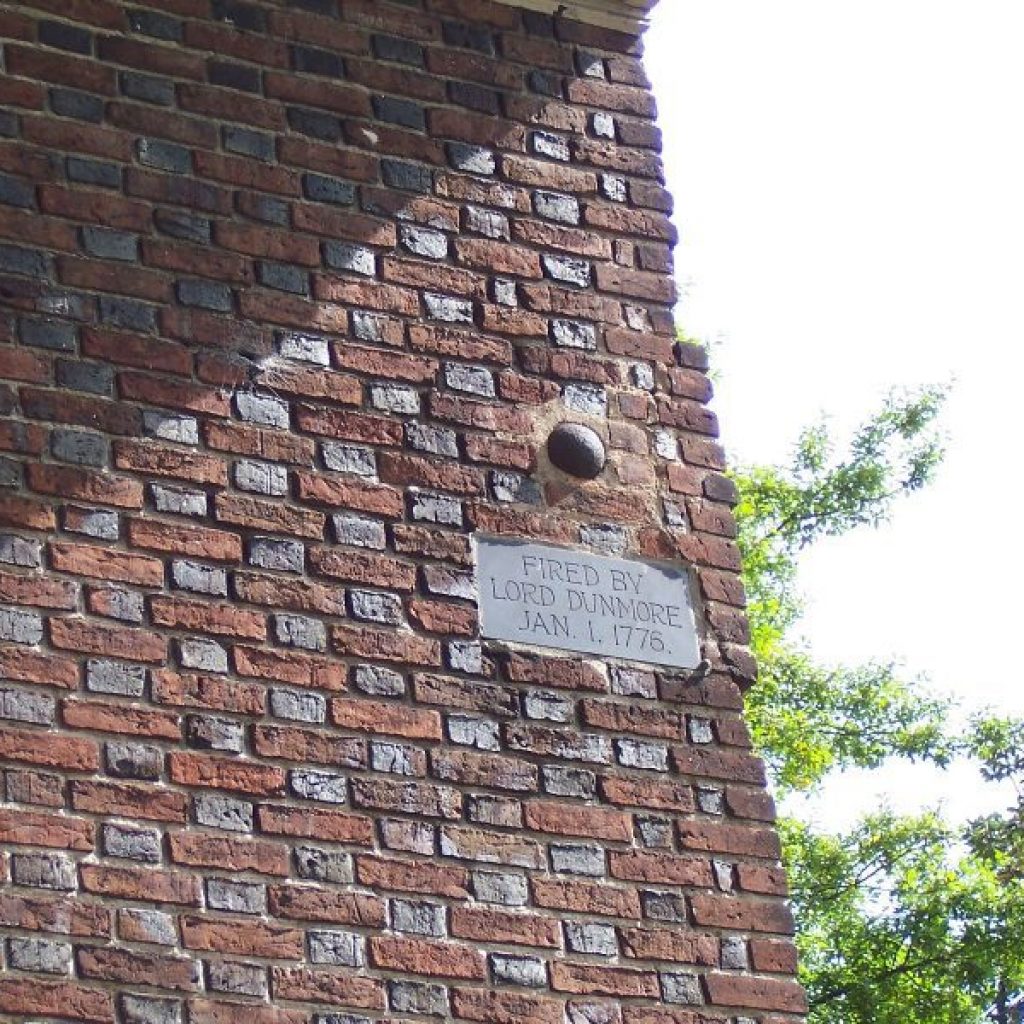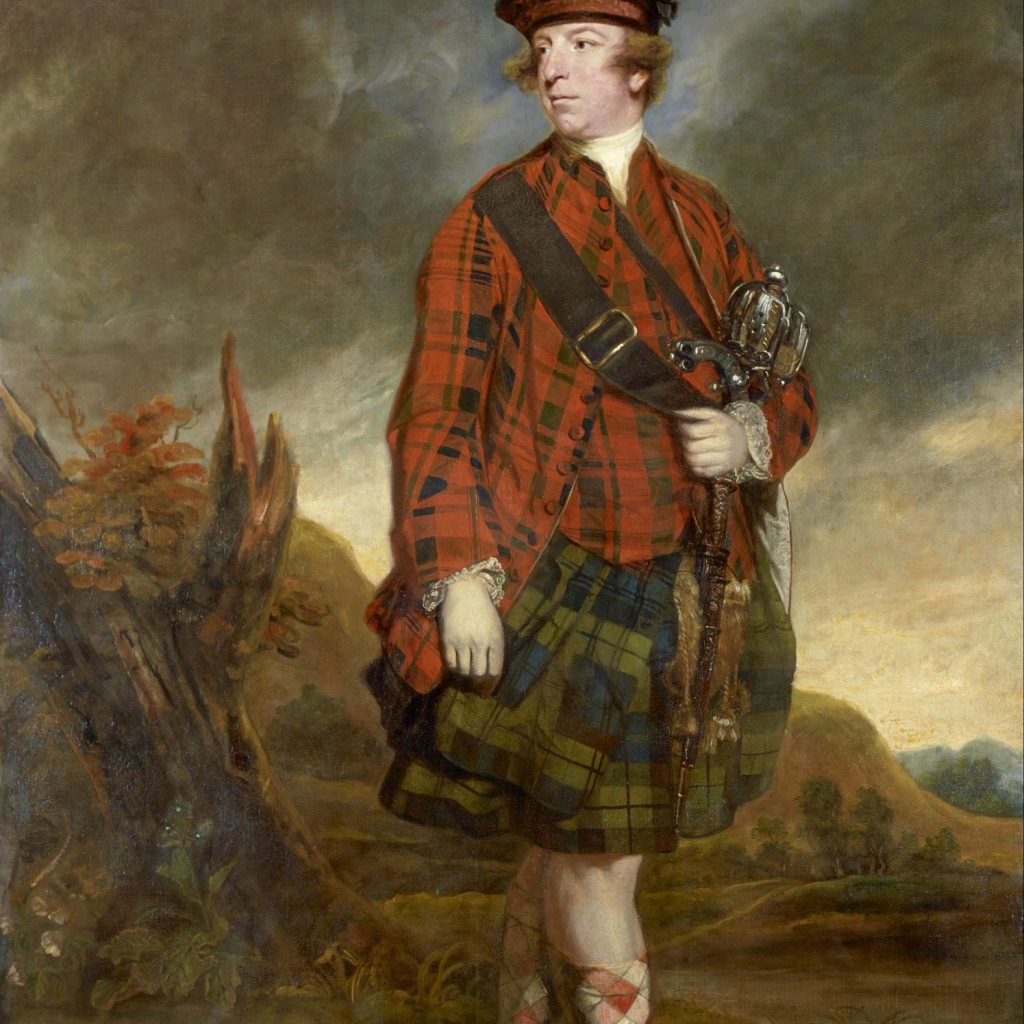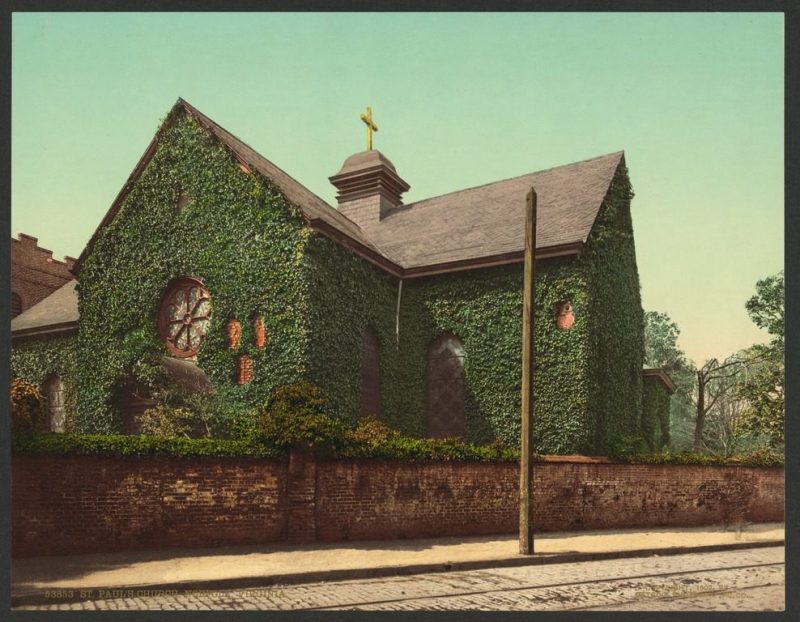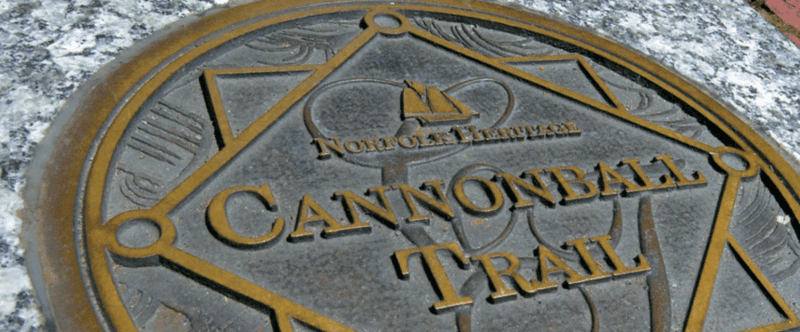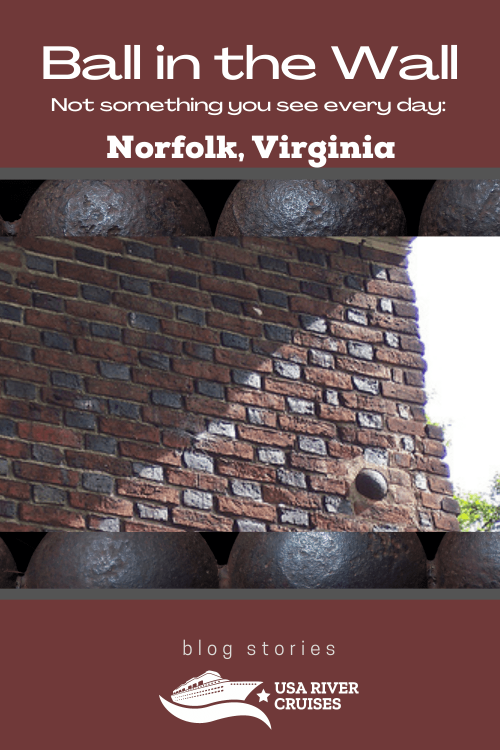
Norfolk, Virginia
Norfolk, Virginia has experienced too much war. The city was a prime target during the Revolutionary War and the nearby naval station was a fought over prize during the Civil War. The scars of war are easily visible as you gaze up at the old St. Paul’s Episcopal Church on St. Paul’s Blvd in old downtown Norfolk. Look up and you’ll see a cannonball embedded in the side of the church.
Colonists take sides
That British cannonball was fired by one of our own. Virginia had long been a colony settlement of the British, and on January 1, 1776, was being led by Lord Dunmore, the royal governor of the colony of Virginia. He was a proud loyalist battling to keep Virginia aligned with the British while based in Norfolk. He raised an army to defend the city, bolstered by offering freedom to any rebel-owned slave. His army suffered a terrible defeat at the Battle of Great Bridge where his forces lost 600 men, to only one rebel soldier. Lord Dunmore’s forces were forced to retreat onto ships and flee. But Lord Dunmore did not go quietly into the night.
On that day in January 1, 1776 he chose to stay just off shore and began bombarding his former home city with cannonballs and sending troops ashore to set fire to buildings along the waterfront. He began what ultimately became the total annihilation of the city with over ⅔ of the buildings destroyed. Having a British loyalist bombard a small colonial city was bad PR for the royalists, and worked to the advantage of the rebels. It is said that the British soldiers only started a small portion of the fires, and the rebels may have taken advantage of the situation by making it look worse by lighting some fires themselves. The Revolution was heating up. The Battle of Bunker Hill had been fought in June the previous year and Thomas Paine was getting ready to publish his pamphlet “Common Sense.” Although war had not been officially declared yet, in Norfolk it felt like war to them.
Fired by the HMS Liverpool
On that New Year’s morning, cannonballs rained down upon the city. Lord Dunmore had effectively just ended 168 years of British rule in Virginia. The rebels now had a rallying cry and a full revolution was coming soon.
St. Paul’s Church took a hit. The brick church had been built in 1739 and was just a few blocks from the waterfront. The cannonball lodged in the south side of the church wall. The church was the only structure in Norfolk Borough to survive the bombardment and fires. The cannonball was left in place in the following years, soon forgotten as the church slowly was falling into disuse, the building left empty, and the graveyard neglected. Ivy grew over and covered most of the brick church. At some point, the cannonball fell from the wall and landed in the soft ground below.
A Young Schoolboy Witness
In 1875, a writer for the Norfolk Virginian wrote an article for the newspaper in which he described finding the cannonball. In 1848 he was a student at the school across the street from the church, likely gazing out the window not paying proper attention to his studies. He remembered seeing people from the new congregation searching for the cannonball. The church was coming back to life with a new congregation, fixing up the building and tending to the graveyard. A servant was sent to dig around the area they figured the cannonball must have landed, and quickly found it buried 18” below the ground. It was decided to return the rusty old cannonball to its original position in the wall, this time cementing it in to keep from falling again. A plaque was added telling its story and remains to this day.
Norfolk’s war history
Being a port town near a major naval shipyard, Norfolk has long been associated with America’s military history. In May 1862, Norfolk was again at the center of attention. The importance of the Naval shipyards was unmistakable. The Union sent 6,000 troops to take the city and control the shipyard. The mayor of the city quickly realized they were overpowered and surrendered relatively quickly, rather than face yet another devastating battle. The city spent the rest of the war under martial law. It was a major victory for the Union. St. Paul’s Church was used to hold services for the soldiers and left in peace. The Naval Base grew rapidly following the outbreak of WW1, creating the need for much additional housing in the area and growing the city. During WW2 it was an active base as ships regularly patrolled the eastern seaboard for German U-boats. The renowned WW2 general Douglas MacArthur is buried nearby, and his funeral was held at St. Paul’ in 1964.
You are free to follow the Cannonball Trail, with brass plaques embedded in the sidewalk to help guide you throughout old town Norfolk. It is a self-guided tour that takes you through 400 years of Norfolk’s history. See many historic sites including the famous cannonball in person, mindful that it is in a graveyard and part of an active church. Norfolk has many interesting stories to tell, and you can visit the city on a Chesapeake Bay cruise.
American Revolution Cruise
Roundtrip Washington, D.C.
- 10 Nights
- October 31, 2024,November 10, 2024,November 12, 2024--
4 more dates available. - From $6,910
- American Constitution
East Coast Inland Passage-American Star
Jacksonville to Baltimore
- 14 Nights
- November 4, 2024
- From $8,515
- American Star

